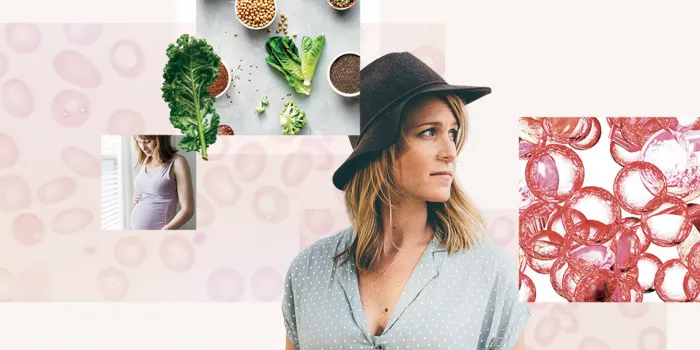If you feel inexplicably tired, weak or dizzy, or experience headaches or nausea, you may have anemia. Women and girls with von Willebrand disease and other bleeding disorders—and many genetic carriers of bleeding disorders—are at increased risk of this condition, largely because of blood loss from heavy or prolonged menstrual bleeding. “Women with bleeding disorders are at much greater risk because they have more severe and longer duration of bleeding,” says Margaret Ragni, MD, MPH, professor of medicine in the division of hematology/oncology at the University of Pittsburgh Medical Center and director of the Hemophilia Center of Western Pennsylvania.
There are several types of anemia, including vitamin-deficiency anemia, anemia of chronic disease, aplastic anemia and sickle cell anemia. The most common form is iron-deficiency anemia, which affects about 3 million people per year in the United States—a disproportionate number of them women.
Pumping Iron
Iron is key to the production of hemoglobin within red blood cells. Hemoglobin transports oxygen to cells, nourishing organs and tissues. When iron stores run low because of blood loss, oxygen isn’t distributed well throughout the body. This is what can cause those feelings of tiredness and dizziness. You may also experience depression or anxiety, a rapid heartbeat or memory problems.
“In addition to standard tiredness and fatigue and headaches, you can have central nervous system changes—changes in cognition and understanding, mental functioning, mood and physical functioning,” Ragni says. “You can’t do your daily tasks.”
Another cause of low iron, and thus a risk factor for anemia, is a diet lacking in iron-rich foods. “If you don’t eat meat, for example, that limits the amount of iron intake, and it may even trip you into a borderline iron deficiency,” Ragni says. Lean beef, poultry and seafood are all good sources of iron. Green, leafy vegetables, legumes and grains such as quinoa, brown rice and oatmeal are also iron-rich.
“A diet high in iron-rich foods is always a good idea, whether it’s meat or plant-based foods,” says Tina Willis, RDN, a nutritionist at the Indiana Hemophilia & Thrombosis Center. “Heme iron comes from animals—meat and eggs—and is more readily absorbed by our bodies. Non-heme iron comes from plant-based sources, and that iron is a little more difficult for our bodies to absorb.”
Anemia and Pregnancy
Women who are pregnant need to be especially concerned about anemia. During pregnancy, anemia risk rises because blood volume increases to nourish the growing baby, yet iron levels remain the same. Mild anemia during pregnancy is common. “The difference for women who have von Willebrand disease or are carriers is they may have been iron-deficient before they got pregnant,” Ragni says. “That may put you in a more precarious place.”
Diagnosis and Treatment
If your doctor suspects you are anemic, she’ll test you for iron deficiency and anemia through a simple blood test. If you have anemia, she’ll probably prescribe iron supplements. “It doesn’t go away overnight,” Ragni says. “It took months to get there, and it takes months to get better.”
Your doctor may also prescribe hormone treatments or medication to control heavy menstrual bleeding so you’re less likely to become anemic in the future.
The scoop on iron supplements
Doctors often recommend ferrous sulfate supplements for anemia because they’re the cheapest and most widely available, but they can cause constipation and other gastrointestinal woes.
“I prescribe ferrous gluconate, which may be better tolerated,” says hematologist Margaret Ragni, MD, MPH.
If you don’t improve with iron supplementation after a month or two, you may need intravenous iron. This is also offered to the small percentage of women who can’t tolerate iron supplements.
Avoid consuming certain foods and beverages within an hour of taking iron supplements: The tannins in coffee and tea can decrease absorption, says nutritionist Tina Willis, RDN. So can calcium (found in dairy products), folic acid (found in spinach and dark chocolate) and phytates (found in whole grains and legumes).
But vitamin C can help to enhance iron absorption, whether from tomatoes, strawberries or orange juice, so combine iron-rich foods with those rich in vitamin C (think ground-beef chili prepared with tomato sauce).
“I’ll tell people, when they are taking the pill or the supplement, to just take it with a very small glass of juice,” Willis says. “It can even be a 4-ounce glass.”

